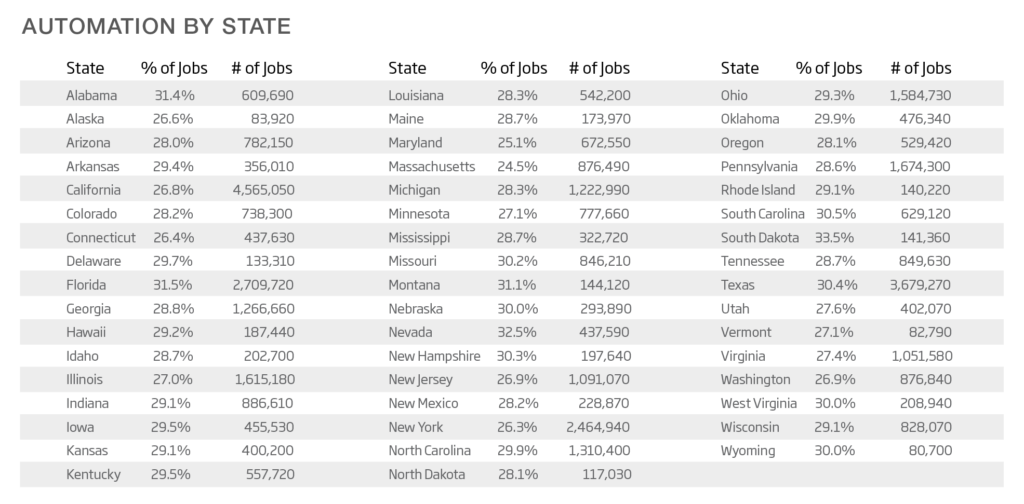 Of increasing interest to commerce today is automation of the workforce — either heralded or bemoaned. What Henry Ford’s assembly line started in reducing individuals to replaceable cogs in a replicable process, robots seem poised to finish in replacing humans completely. At least in some jobs.
Of increasing interest to commerce today is automation of the workforce — either heralded or bemoaned. What Henry Ford’s assembly line started in reducing individuals to replaceable cogs in a replicable process, robots seem poised to finish in replacing humans completely. At least in some jobs.
As Kempler Industries reports, “From automotive manufacturing to cashiers, automation has already started to disrupt occupations and industries across the country. Machines and robots have replaced humans for various work-related tasks and will continue to do so in the coming years.”
Kempler, which has been in the business of buying and selling used machinery through three generations of family ownership and recently added new machinery to its inventory, studied data from the Bureau of Labor Statistics Occupational Employment Statistics and the University of Oxford’s “The Future of Employment: How Susceptible are Jobs to Computerisation” study to get an idea of how big an impact automation is expected to have within each of our United States.
Kempler’s analysis reveals that no state is immune to automation. Overall, roughly 41 million, or 28 percent of all U.S. jobs, are most susceptible to automation. Occupations within the service industry are some of the hardest hit in terms of being at risk for automation, specifically cashiers, retail salespersons and fast food employees.
Automation in Metro Cities
Kempler also looked at automation on a more granular level by analyzing the percent of potential jobs lost within the 50 largest metropolitan areas. Texas has three metro areas all within the top 10 cities on Kempler’s list that could experience the largest amount of jobs lost, including the San Antonio, Dallas and Houston metro areas; Florida has the dubious distinction of placing the most cities within the top 10 list — Miami, Tampa, Orlando and Jacksonville — all of which could all see 29 percent or more of their current workforce, or 5.8 million jobs, lost to automation. Out of the top 10 “honors” but still high on the list at number 26 is the Phoenix-Mesa-Scottsdale metropolitan area, expected to lose 27.8 percent of its current jobs.
Kempler’s report concludes, “Automation has the potential to fundamentally transform industries, jobs and lives, but the scale and pace of that transformation remains to be seen. As automation continues to make advancements in both our personal and professional lives, it will be interesting to see how industries and people adapt to these changes.”

Source: kempler.com/automation-nation
Methodology
Kempler Industries’ study analyzed occupations that are the most susceptible to automation, using data from the University of Oxford’s “The Future of Employment: How Susceptible are Jobs to Computerisation” study, which analyzed the probability of automation for 702 detailed occupations. From that list, Kempler analyzed the top 170 most “at-risk” occupations and compiled the number of employees within those occupations for each state as well as 350 metro areas using data from the Bureau of Labor Statistics Occupational Employment Statistics.














Speak Your Mind
You must be logged in to post a comment.